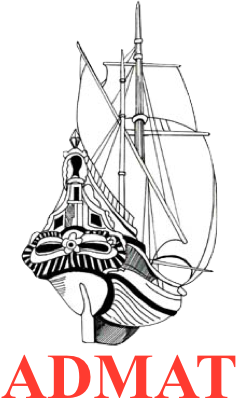Some of the July 2018 ADMAT survey Team on the beach in front of Le Dragon wreck site
The international Team, flying the Explorer's Club Flag No:211; has returned from an exciting month long successful survey of Le Dragon wreck site. Le Dragon, the last French warship lost in the American Revolutionary War in 1783, was formally the English Liverpool Privateer Dragon and before that the Washington one of the first American warships of the American Continental Navy. She was beached on the north coast of the Dominican Republic, after an epic battle to save the King of France's spy and secret orders, and then scuttled by her Captain.
This year we had a slightly larger Team than normal with Team members represented, UK, USA, Dominican Republic, France, Australia and Canada. The work was undertaken for the Dominican Government, Oficina Nacional de Patrimonio Cultural Subacuático (ONPCS).
The Teams objectives were to further examine the wreck site and learn what we could. We were lucky in that a recent storm had partially uncovered the starboard amidships section of the ship including two 9pdr Carron iron cannons which were totally exposed. The remaining hull timbers for the exposed floors and futtocks were seen for the first time on the starboard side.
Cannon No:2 on Le Dragon's bow, uncovered by a storm earlier in the year
One of the research questions was the length of the ship. We know that originally as built as the Washington in the US as one of the first privateers for the American continental Navy, she only had two masts. However after being captured by the English and then again by the French she was rebuilt in Boston. We know that at some point after this a mizzen mast was added which supports the theory that the ship was lengthened.
During the survey a number of iron ballast blocks were located. This is interesting in that this ship was ballasted in 1783 with iron and ballast stones. The positioning of the ballast around the site also gives us the location of the stern of the ship which was one of the focus of the survey. This new information enlarges the length of the ship to around 100ft. A few interesting personal items were found as well as one of the large water casks which was partially intact.
A lead box and lid amongst iron ballast blocks in the stern section of Le Dragon
During the survey small and large pieces of the ships hull were found 53 meters away from the amidships section, which gives us an indication of the blast radius from the scuttling charge which blew up the rear section of the ship to prevent capture by the English Admiral Hoods forces in 1783.
The Team will be returning to the wreck in July 2019 and anyone interested in taking part should contact ADMAT.



